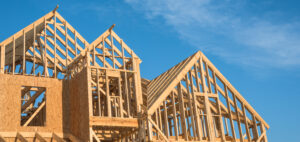
Low mortgage rates and a strong global economy are pushing up home prices. Supply chain constraints, reduced skilled labour availability and shipping delays are increasing new home construction costs.
Home prices are experiencing robust gains as the global economy recovers from the pandemic. The UK House Price Index (HPI) reported average house price in the UK is £255,535 as of July 2021, up 8% compared to the previous year. Statistics from Zoopla, an online property portal, show similar price tends. Zoomla estimates the cost of the average home in Britain is £235,000, up about 6% over the past year.
That trend of movers looking for more space and bigger gardens, after the repeated lockdowns, has “further to run”, according to Gráinne Gilmore, Zoopla’s head of research. “In the face of the very strong buyer demand evident since May last year, average home values have risen by a greater margin in regions and towns where relative affordability is greater,”
The IHS Markit/CIPS UK Construction PMI dropped to 55.2 in August 2021, down sequentially from 58.7 in July. The latest report highlighted supply chain constraints and transportation costs began to weigh on overall activity. The UK construction industry is being hit by unprecedented shortages of raw materials and labour, the costs of which are also rising at rates far in excess of anything previously recorded in over two decades of PMI survey history.
Commercial work was the best performing broad category of construction output in August, even as growth eased to a six-month low, followed by housebuilding and civil engineering. Also, lack of skilled workers began to weigh on the rate of hiring. On the price front, input cost inflation accelerated to the second-fastest rate in the 24-year history of the survey. Looking ahead, construction companies remained highly upbeat about their growth prospects over the coming 12 month.
“Evidence that the UK construction sector began to feel the impact of ongoing supply chain disruption was widespread midway through the third quarter of 2021. Growth rates for overall activity as well as the three monitored subsectors eased further from the recent highs earlier in the summer,” said Usamah Bhatti, Economist at IHS Markit. “Supply chain disruption continued to disrupt activity across the UK construction sector, as demand for materials and logistics capacity outstripped supply. Average vendor performance continued to deteriorate at a near-survey record rate, as firms noted severe shortages of building materials, a lack of available transport capacity and long wait times for items from abroad due to port congestion.”
Eurostat also reported housing market strength – home prices increased 6% for its Member States. The highest annual increases in house prices in the first quarter of 2021 were recorded in Luxembourg (+17.0 %), Denmark (+15.3 %), Lithuania (+12.0 %), Czechia (+11.9 %) and the Netherlands (+11.3 %), while prices fell only in Cyprus (-5.8 %).
In the United States new home prices increased 19% year over year in July 2021, the fastest pace in over 20 years. Supply of homes available for sale is low, due to lower construction levels of new single family homes over the past decade. Reduced availability of building materials and higher construction costs have led to new home construction delays. Several home builders have reported difficultly finding adequate labour and building materials.
Read more:
Global Housing Market Boom Pushing Construction Costs Higher
